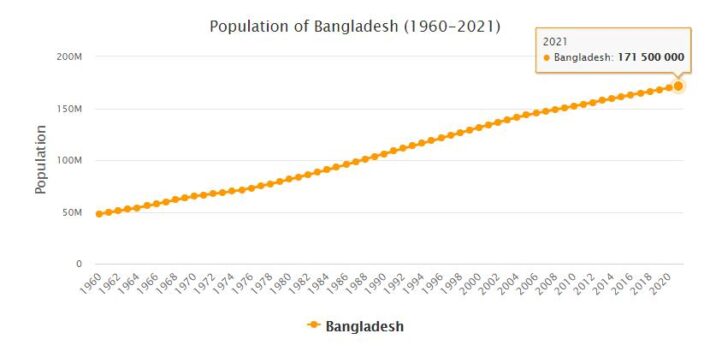Yearbook 2012
Bangladesh. As in previous years, Bangladesh’s political arena was marked by the fierce power struggle between the two major parties of the Awami League, which holds the government with Prime Minister Hasina Wajed at the head, and the Islamist opposition party Bangladesh’s Nationalist Party (GDP). In January, the Bangladeshi army announced that it had managed to stave off a coup attempt in which a dozen Islamist military commanders would have tried to overthrow Prime Minister Wajed’s government. Several of the coup makers were reported to have been arrested. Some observers, however, felt that the army’s announcement of the failed coup attempt could very well be a way for the armed forces to try to demonstrate its importance and influence.
In February, the murders of the two famous TV journalists Sagar Sarwar and his wife Meherun Runi received much attention. The couple were killed in their home in the capital Dhaka by unknown perpetrators. There were suspicions that the murders had to do with the couple’s work as reporters because no valuables were taken from their home. Opposition BNP leader Khaleda Zia was not late in blaming the government for the murders.
In March, the International Maritime Law Court (ITLOS) granted Bangladesh the right to a pair of offshore areas in the Bay of Bengal, areas that Bangladesh has been in conflict with neighboring Burma since 2009. In the offshore areas, there is also plenty of fish and probably some oil and natural gas.
- AbbreviationFinder.org: Provides most commonly used acronyms and abbreviations for Bangladesh. Also includes location map, major cities, and country overview.
Nearly 140 people were killed when a ferry in the same month sank in the Meghna River following a collision. Such accidents are very common in the Bangladeshi river systems, where traffic is intense and safety lousy.
GDP leader Zia announced in April that 18 opposition parties had joined forces in an alliance. Among the parties were the conservative Islamist Jamaat-e-Islami (JI) and the Bangladeshi Jatiya Party (BJP). Later that month, the newly formed Alliance called on the Bangladeshi to take to the streets in protest of the disappearance of GDP politician Mohammed Ilias Ali and his driver. The BNP accused the government of kidnapping the two men. In the demonstrations that broke out in Dhaka and Sylhet, dozens of people were arrested and two were killed in the clashes between protesters and police. A BNP supporter was reported to have been shot by the police and at the same time a number of smaller bombs should have detonated around Dhaka, though no one was injured. The government led by the Awami League refused to remove the missing men.
In April, Bangladesh was forced to borrow $ 987 million from the International Monetary Fund (IMF) to strengthen its foreign exchange reserves. In return, the country promised to increase tax revenues and reduce government subsidies.
Government-critical demonstrations were also held in May. Khaleda Zia said she would call for a series of general strikes unless the government reintroduced the system of an unpolitical transitional government ahead of upcoming elections – a system intended to stave off the fierce contradictions that usually arise in the Bangladeshi election campaigns between the Awami Federation and GDP, but which the Wajah government had.
US Secretary of State Hillary Clinton visited Bangladesh in May and held meetings with, among others, Prime Minister Wajed and GDP leader Zia. Clinton praised Grameen Bank founder Muhammad Yunu’s work on microcredit lifting millions of people out of poverty. The statement was sensitive because Wajed had removed Yunus from the post of Grameen’s CEO, a decision that is generally seen as politically motivated following a personal conflict between the two.
Around 300 factories outside Dhaka were temporarily forced to close in June when half a million textile workers went on strike for higher wages.
In the state budget that was submitted in June, the defense received significantly increased funding. During the summer, a violent conflict between Buddhists and Muslims in western Burma led tens of thousands – perhaps hundreds of thousands – of Muslims, especially from the Rohingya minority group, to flee across the border to eastern Bangladesh. Hundreds of refugees were rejected directly at the border by Bangladeshi police as a result of the authorities trying to reduce the refugee stream. The authorities ordered three aid organizations to cease their emergency aid to the refugees because it was considered to attract more people across the border.
The Minister of Information and Communication Technology, Syed Abdul Hossain, was forced to resign in July due to corruption charges in connection with a bridge construction partially funded by the World Bank. When the credit institution learned about the corruption suspicions, it had demanded the resignation of the minister. Corruption is a widespread and serious problem throughout the Bangladeshi state apparatus.
In late September and October, Buddhist households and temples in the southeastern district of Cox’s Bazar were attacked by Muslims upset by images on a burnt Koran on Facebook. Police and army soldiers were called in to curb the unrest and nearly 170 people were arrested.
In November, over 110 people were killed in a fire in a textile factory in a suburb of Dhaka. The fire focused attention on the lack of safety at the country’s thousands of textile factories. In the fire-ravaged factory, among other things, emergency exits have been missing. Foremen must also have tried to prevent workers from leaving the building. A later investigation showed that the fire was on fire. The incident led to widespread protest actions among Bangladesh’s factory workers.
Population 2012
According to countryaah, the population of Bangladesh in 2012 was 156,256,165, ranking number 8 in the world. The population growth rate was 1.150% yearly, and the population density was 1200.4016 people per km2.
